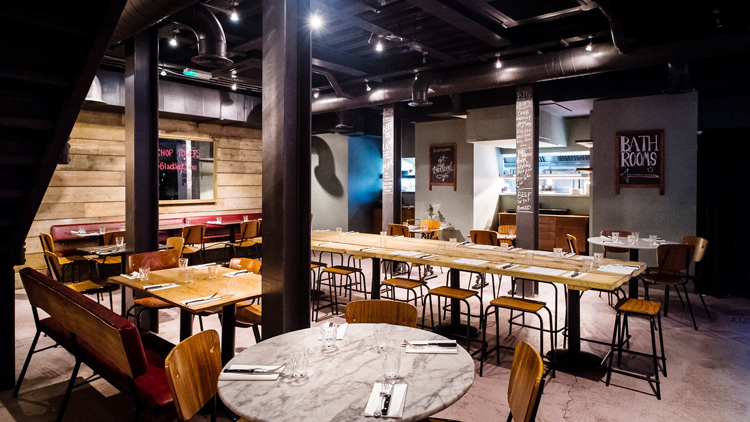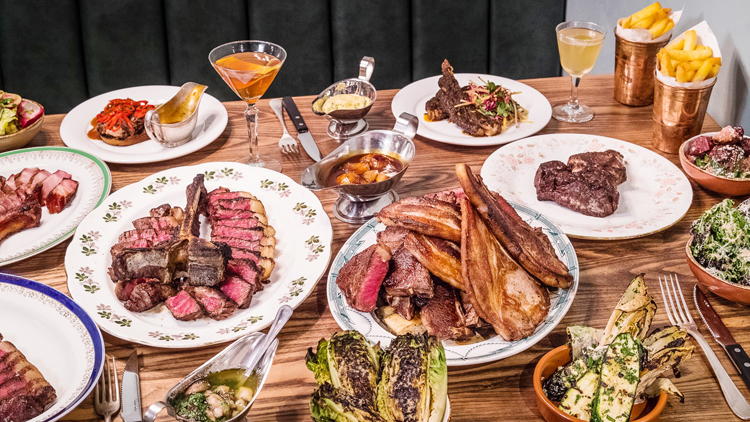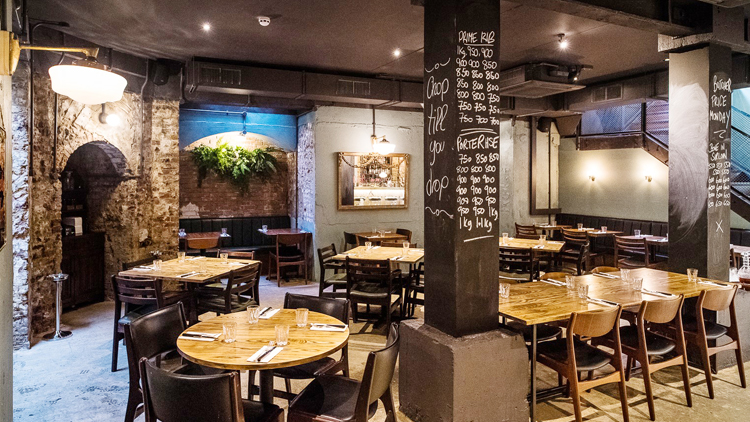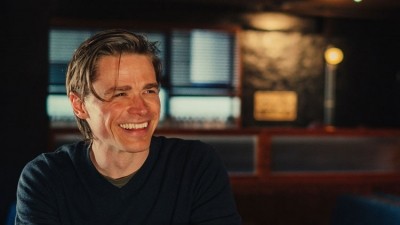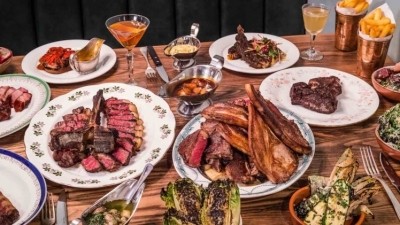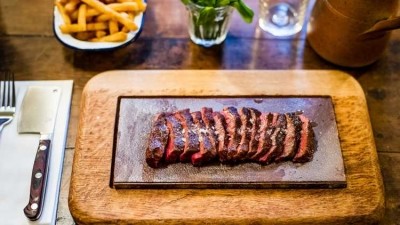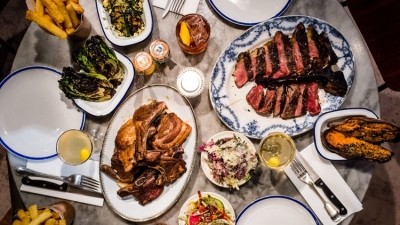Gordon Ker on how Blacklock became top of the chops
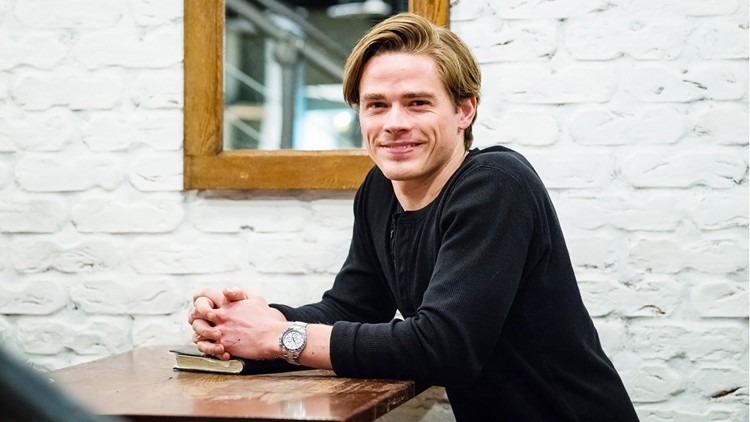
Four years ago Gordon Ker was a lawyer at law firm Olswang and stuck in a rut. While he had little love for the job, he was full of admiration for his restaurant operator clients, which included Will Beckett and Huw Gott of Hawksmoor. And it was while working with the steakhouse founders on their deal with Graphite Capital (the private equity firm that invested in the pair’s restaurant group in 2013) that he decided to embark on his own restaurant journey and set up Blacklock, a meat-led restaurant no doubt inspired by the duo, serving premium cuts at very competitive prices.
Yet despite his high-profile contacts, and a sound knowledge of the legalities surrounding the restaurant sector, Ker’s transition from lawyer to restaurateur was far from straightforward, not least due to his total lack of operator experience.
“I remember sitting with Will late into the night after we’d done their Graphite deal,” he recalls. “We had been chucked out of every venue possible and it was about 3am – probably not the best time to do an investment pitch – but I said ‘Will, I’m going to open a restaurant’.
“I think his first reaction was to spit out his cocktail. His second was to remind me of the oft-quoted saying: ‘how do you make a small fortune in the restaurant business? Start with a large fortune and open a restaurant.’ I didn’t have any kind of fortune to my name but with spades of naivety and gusto I decided to quit my job, phoned my parents and told them 10 years of legal training was well spent.
“I’m not sure if Will and Huw liked me, or the idea – they probably felt pity for a guy who had just quit a career to almost certainly fail.”
Despite initial misgivings, the Hawksmoor founders became investors in Blacklock, and while developing the idea and looking for sites, Ker took a job as a waiter at Hawksmoor.
“Without them, we wouldn’t be where we are today,” Ker says. "We probably would have gone bust more than once.”
Irons in the fire
Failure probably didn’t feature in the Hawksmoor pair’s thinking when they backed Ker, and their faith in him has proved founded. The first Blacklock, in Soho, was an instant success, making Restaurant’s National Restaurant Awards Top 100 and also being named the spot for the the Best Sunday lunch by Observer Food Monthly readers in 2016. The critics also loved it, with Grace Dent describing it in the Evening Standard as “Hawksmoor with a twist of the Hacienda."
But getting to that heady point wasn’t without its challenges, with Ker having to overcome a number of obstacles in pursuit of his chophouse dream.
While support from his sector heroes was a boost, finding the first site for his new venture was fraught with difficulties. With no experience, no covenant, no trading history and not even a name for the restaurant at the time, this was a challenge (it eventually took its name from the Blacklock foundry in Tennessee, after Ker discovered that its antique irons were an ideal way of pressing the meat on to the grill).
It forced him to be creative, and in the end he settled on a damp-ridden basement and brothel in Soho. “I decided against all legal training to sign the lease without permission to open a restaurant,” he says. “I’ve not really thought about what would have happened if the planning permission hadn’t gone through and I was left in charge of a brothel!”
On the plus side, there was no competition for the site, despite its desirable Soho location, and Ker fixed up the décor and interior on a shoestring budget. His vision for the concept was clear – an old-fashioned English chop house, with a focus on serving some of the best meat in the country as cheaply as possible, accompanied by an equally good-value drinks list. “Blacklock is a real value offer – much to the despair of my accountants.”
Cheap and cheerful
Blacklock isn’t the first restaurant to take inspiration from Hawksmoor, and it follows in the footsteps of another meat-led restaurant group, Flat Iron. As is the case with Flat Iron, Ker wanted to replicate the food quality and hospitality of Hawksmoor but with a much more simple food offer, and at more everyday, affordable prices.
Blacklock’s menu is short but not limited, with a choice of three ‘pre-chop bites’ – cheese and pickle; pig’s head and kimchee; and egg and anchovy (£3 for a plate of three) – followed by a main menu of pork, lamb and beef chops in either ‘skinny’ or ‘big’ options as well as a few meats off the bone, all priced by the 100g.
Sides include the de rigeur beef dripping chips; kale and parmesan; charred courgettes with chicory and stilton; and coal-roasted beets and goat’s curd. The restaurant also serves five classic cocktails for a fiver each and five more involved ones for £7.50, all of which are served at the table from a 1980s cocktail trolley.
“So much about coming to a restaurant is about how it makes people feel,” says Ker. “You can find high-quality steakhouses with great service elsewhere in London – but you usually get charged through the nose. I used to go to some great places, though I don’t have the money any more.
“Blacklock aims to give you the best food and drink and then give you a shock at the end with the bill – but the other way round. We’ve had people come in and laugh at how cheap it is. That’s the reaction we’re going for.”
So how does Ker manage to serve premium cuts at such low prices and have a viable business model? “We make a reasonable profit,” he says. “Our gross profit is not 70%, but we make savings in other places. Our rents and property costs are 3.5% or below.
“We don’t have all the bells and whistles that come with some operators. We go for great postcodes, but in basements with no frontage, so you have to know about us to find us. Operationally we’re set up leaner.”
A chop off the old block
Blacklock’s second restaurant, in the City, is located in equally unconventional surroundings. Sited in an old electricity substation set rather aptly in the basement of a grade II-listed building, it’s also set in the middle of what used to be London’s main meat market in medieval times, when butchers’ stalls lined both sides of the street.
Blacklock City is a more grown up offer. As well as having almost twice as much dining space as the Soho original and a separate bar, it takes bookings for dinner (Soho stops taking reservations after 6pm) and has a slightly smarter, City-friendly décor. The menu, however, is the same, and Ker has created a food blueprint that is easily repeatable in other locations.
While he says he didn’t open Blacklock with the idea of it being scalable, there is a desire to continue to grow and build on the early success of the business. “We would like to open more restaurants as we progress. But we’re not in for a massive roll out. We want to stay true to our ethos of being quality, cheap and fun.
“If good opportunities arise, we will take them. We will try to do slightly different things in different locations.”
A version of this interview first appeared in MCA, which provides breaking news, intelligence and analysis on the UK’s restaurant industry. To subscribe to its breaking news feed, click here
